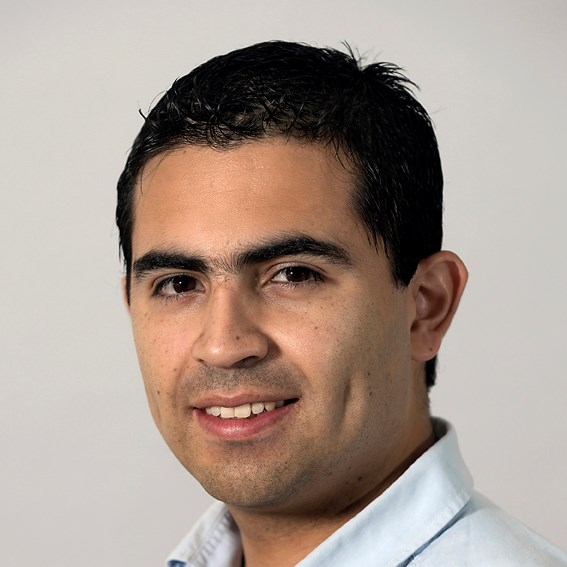
NHH changed the World Cup qualifiers
Since 2005, those responsible for Chilean top flight football have used NHH researcher Mario Guajardo’s mathematical models to schedule fixtures. His methods are now also used in the South American World Cup qualification system.
Text: Petter Lindheim Reinem
‘The previous method for scheduling fixtures in the South American World Cup qualifiers wasn’t ideal. It resulted in complaints from some nations who claimed that the schedule favoured certain countries at other countries’ expense.'
The method Mario Guajardo from NHH’s Department of Business and Management Science is referring to is called ‘symmetric schedule’.

In the case of the South American World Cup qualifiers, where ten nations in one and the same qualifying group compete for five places in the World Cup finals, the method means that a nation will play each opponent once in the first nine games. The fixture list is identical for the next nine games, with the home and away schedule reversed.
Unanimously adopted
The South American Football Confederation acted on the complaints. They decided to change the format for the fixture schedule in advance of the qualifiers for the World Cup in Russia in 2018, and the ten member countries were encouraged to submit proposals to change the system.
Guajardo, who has previously worked on fixture scheduling for Chilean top flight football, joined forces with two South American colleagues and drew up a fixture plan using integer programming.
Guajardo to the finals
Their system was endorsed by the Chilean Football Association as its proposal, and in 2015, it was unanimously adopted by the ten member nations for use in the World Cup qualifiers.
Double rounds
In the South American World Cup qualifiers, there are a total of 18 fixture dates in nine ‘double rounds’.
‘In each "double round", each team plays two matches at a few days’ interval. There are several months between each double round, however,’ Guajardo explains.
The method Guajardo and his South American colleagues came up with involves minimising the number of times countries have to play two away or home matches in a row in a double round. These are known as ‘double-round breaks’.
‘There are a number of disadvantages associated with playing two back-to-back away games. In addition to the fact that a team will not have the home advantage for two matches in a row, away fixtures involve long journeys and potentially tired players.'
Eliminated ‘double-round breaks’
The researchers found out that the smallest number of ‘double-round breaks’ that had been possible in the last five World Cup qualifiers was 16. ‘Double-round breaks’ were thus impossible to avoid using the old format.
‘In addition, they were unevenly distributed. Argentina and Brazil had no "double-round breaks", while Bolivia, on its part, had to put up with four.'
The models they created eliminated all ‘double-round breaks’. This means that no team now has to play two home or away matches at short intervals.
All its opponents
At the same time, they made sure that each team meets all its opponents in the first half of the qualifiers, although, unlike previously, the match sequence in the second half of the qualifiers is not completely identical.
The new format stands out in that, in the final matches in the qualifying round, each team plays against the team it met in the first round of the qualifiers.
In addition to this change, the fixture schedule is symmetrical in that the first match in the second half of the qualifiers is played against the team that the country in question played against in the second match in the first half of the qualifiers etc.
Home-away sequences preferred
The researchers also took account of the distribution of home-away sequences in ‘double rounds’. This is because countries prefer to play home-away sequences rather than away-home.
‘Take the Argentinian national team as an example, where many of their players play in leagues abroad. The players are typically brought together in their home country before a match, to train and plan their matches. It is therefore an advantage to start with a home match.
Moreover,’ says the researcher, ‘when a team plays match number two away, the players can fly straight back to their respective leagues without having to travel home first.'
Home and away
With the new fixture system, there is a balance between home-away and away-home sequences. In the four preceding World Cup qualifiers, Brazil had to put up with playing nine away-home sequences, while Argentina had the advantage of nine home-away sequences.
The balance in the new system means that the teams will have four or five home-away sequences of the total of nine ‘double rounds’.
‘In addition to an even distribution of home-away sequences among the teams, we also made sure that no teams have to play against the two top teams, Brazil and Argentina, two matches in a row,’ Mario Guajardo continues.
Educational effect
In the researchers’ experience, this is the first time operational analysis has been used to schedule football matches at the international level.
Mario Guajardo hopes that this kind of application of operational analysis can influence educational choices.
‘Our work demonstrates the practical application of mathematics. We hope that it will encourage students to choose mathematical subjects like operational analysis.’